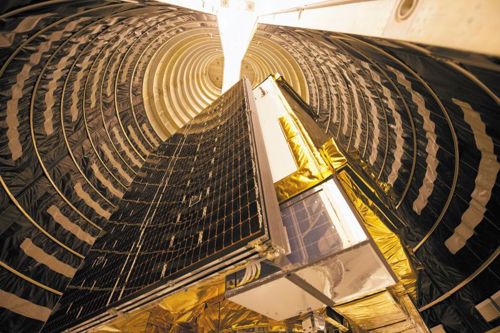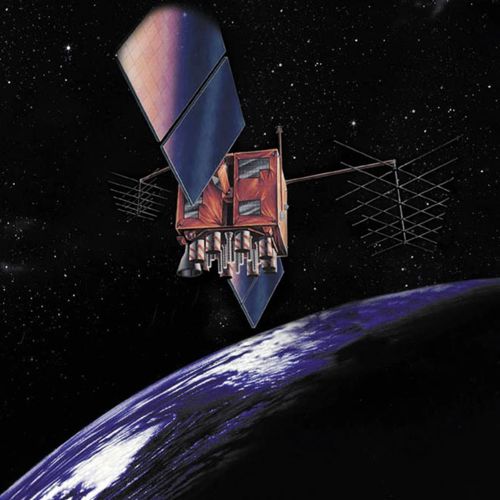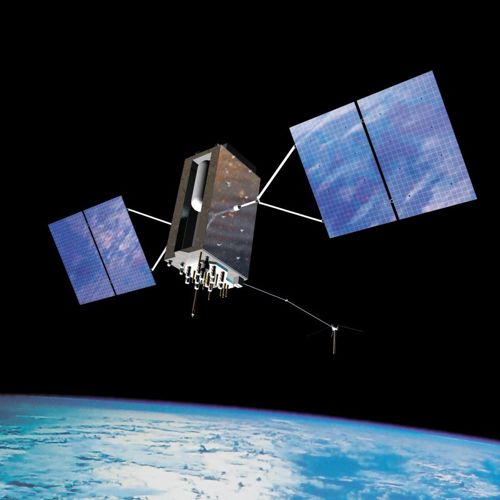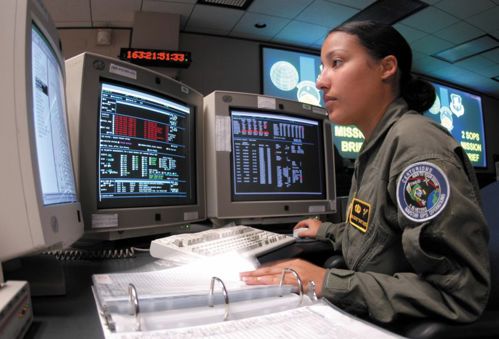
When Brad Parkinson was appointed to lead the US Air Force’s satnav program, it was a job he had been training for all his life. Soon the program would become the Global Positioning System.
Over the next six years, he would save the program from cancellation on several occasions, starting with a major redesign 50 years ago in September 1973.
The US Air Force (USAF) did not want to spend the money it would take to get a GPS constellation into orbit and operation. Fortunately, at the time Parkinson knew as much about navigation technology as anyone in the Air Force. He also had the political sense required to navigate the Pentagon and Washington DC bureaucracies without becoming shipwrecked. This proved a critical skill because many key players wanted to cancel the program.
Academia and engineering
His path to success with GPS began with his graduation from the US Naval Academy in 1957 when he decided to join the Air Force, thinking the policies in that service would make it easier for him to earn an aeronautics and astronautics PhD.
He could not pass the pilot-training eyesight test, so elected to become an airborne electronics officer. Before long he was assigned to the 760th Aircraft Control and Warning Squadron at Colville Air Force Station, located in a remote and mountainous area of Washington State. He was filling three positions meant for more senior officers, keeping the base operational for the warning and intercept of potential Russian nuclear bombers.
By early 1959, Parkinson was ready to move on. He applied for USAF sponsorship of a two-year master’s program at MIT, working at its Instrumentation Laboratory. He studied under the lab’s founder Doc Draper. The electrical engineering courses he added included all the available courses on digital electronics, which at the time were in their infancy.
After graduating MIT, Parkinson spent three years as the chief analyst for inertial navigation systems at the Air Force. He was then admitted to Stanford and completed the requirements for an Aero/Astro PhD in 20 months, graduating in 1966. In his next Air Force assignment, he ran the simulation division and taught space mechanics and control theory to astronauts and pilots at the Test Pilot School at Edwards Air Force Base.

Military service
He was assigned next to the Air Force Academy as a professor and deputy head of the astronautics and computer science department. He had barely settled in when a Naval Academy friend burst into his office and said he had a great opportunity for him. A new AC-130 Gunship project was incorporating a digital fire control system into the aircraft and the innovation was in serious technical trouble.
Parkinson agreed to take over the project. He was soon logging night combat missions in the AC-130 gunship, attacking truck convoys on the Ho Chi Minh trail and taking fire from North Vietnamese anti-aircraft guns. Parkinson, serving as the fire control officer, worked to perfect the new digital fire control system after each combat mission.
On Parkinson’s very first combat sortie, the mission commander, Major Ron Terry, looked very tense for a good reason. The North Vietnamese had set a trap on the Ho Chi Minh trail with stationary trucks left with engines running. The lethal part of the trap was 57mm anti-aircraft guns in the surrounding mountains. All the big AA guns were firing at Parkinson’s AC-130. His gunship fired back and silenced the artillery. These gunship combat experiences gave Parkinson a “visceral, personal understanding of the value of precision weapons delivery”, he has said.
GPS research
By the 1960s the world of military navigation was percolating behind the scenes to create his future job and rendezvous with destiny. Dr Ivan Getting, president of the Aerospace Corporation, convinced the Air Force to fund a study of a new satellite-based navigation system. It would provide positioning in 4D (lat/long/altitude/time), 24/7/365.
Getting’s persistent advocacy spurred the Air Force to study satnav concepts under a program later named 621B. Aerospace Corporation space system engineers James Woodford and Hideyoshi Nakamura found alternatives, with the most capable using four satellites for passive ranging with atomic clocks on the spacecraft. Drs Fran Natali and Jim Spilker of Philco-Ford and Dr Charlie Cahn of Magnavox synthesized the best spread spectrum, passive technique for the ranging signal. It was called Code Division Multiple Access (CDMA).
By late 1972, Parkinson was the director of engineering for the Advanced Ballistic Reentry Systems Program at the Space and Missile Systems Organization (SAMSO). Also at SAMSO was the floundering 621B satellite-based navigation program.
In November, Parkinson’s boss and SAMSO commander, Lt Gen Kenneth Schultz, asked if he wanted to transfer to the 621B Program. Parkinson said yes if he could control the project. Schultz couldn’t make that promise but assigned him to the program anyway. As it turned out Parkinson did gain control of it. At 37, he was probably the youngest Colonel in the Air Force.
At that point, the 621B Program was locked in a death struggle with a Naval Research Lab (NRL) design for an alternative satnav system. The military consensus was that neither program would gain approval.
A Pentagon committee was formed to study alternatives to 621B, but Parkinson had little respect for this group. He ignored the committee.
One reason he was able to ignore the committee was that he had protection from a high-level Pentagon official who became the “Godfather of GPS”. Parkinson says every innovative program needs such a champion to make it to the finish line in the Pentagon acquisition process.

As luck would have it, about four months after reassignment to 621B, Parkinson was tapped to spend an afternoon briefing the number three Pentagon official, Malcolm Currie, undersecretary of research and engineering for the Department of Defense. Dr Currie was visiting and General Schultz had run out of subjects to present, so he sent Currie down to Parkinson’s office. The subsequent two and half hour discussion was held in Parkinson’s small office. The discussion was lively and technically deep. Later Currie was heard to say at the Pentagon that GPS was his favourite program.
The 621B project continued to struggle. The Naval Research Laboratory (NRL) wanted a two dimensional system and Parkinson and the Air Force wanted three dimensions plus time. The NRL patent called for atomic clocks in the user equipment which would have made them prohibitively expensive. Parkinson and the Air Force wanted atomic clocks on the satellites instead, only if the atomic clocks could be modified to fly in the high radiation environment of space. Space-qualifying atomic clocks turned out to be possible.
Development decisions
To move forward with the program, Parkinson wanted to recruit a hand-picked cadre of ten young Air Force officers /engineers he mostly knew personally. It helps when your boss is a three-star general who is on a first name basis with the three star Air Force director of personnel. Parkinson got those ten officers. Six had master’s degrees and four had engineering PhDs.
By August of 1973, Parkinson was invited to the Pentagon’s DoD Acquisition Review Council, chaired by Dr Currie, for an up or down vote on the program. The goal was to gain approval from the acquisition council composed of senior officers and civilians. Parkinson stood on a raised podium and explained the original 621B concept. Once it was over, he waited for a judgment.
Not only was the answer no, but it was unanimous. It looked like the program would be cancelled. Parkinson thought his Air Force career might also be over.
After the meeting, Dr Currie told Parkinson to go back and modify the proposal to the best design he could craft, exploiting technology and ideas from all sources. Within two weeks, Parkinson convened a meeting with his small, hand-picked Air Force team.
On that Labor Day holiday weekend in 1973, the Pentagon parking lot was nearly empty. The air conditioning was turned off in the largest office building in the world. Parkinson and his team of ten officers and two Aerospace Corporation people met in a sweltering fifth floor office, working around the clock and eating stale cheeseburgers dispensed from vending machines.
The session to redesign GPS became known as the “Lonely Halls Meeting”, which is also the title of a 90 minute documentary film about it available on YouTube.
The principal goal of the meeting was to create a seven page summary of a modified GPS design. Parkinson’s team had the right stuff – in depth technical knowledge of the trade-offs involved and insights needed to make the right choices. Parkinson made the final calls.
The system they invented is still flying today, 50 years later, with the same basic design they created in the Lonely Halls meeting (see box: Lonely Halls Meeting decides design).

Build and launch
With these modified concepts all defined, Parkinson spent the next three months trying to convince the key players in the DoD not to say no. In December 1973, the Defense System Acquisition Review Council reconvened and voted yes. He developed a motto for his organization that succinctly described the program’s purpose: “Drop five bombs in the same hole and build a cheap set that navigates.” It meant anyone that worked on GPS could not be confused about the program’s objectives.
Parkinson asked that the NRL clock activities report to him as part of the program and gave them the task of building a space-qualified caesium atomic clock. Currie approved this move. Parkinson hoped that making NRL part of the program would keep the Navy from fighting the GPS project.
Fortunately, Parkinson also tasked Rockwell International to build a backup rubidium atomic clock. Sadly, NRL delivered its caesium clock a year and a half behind schedule. The Rockwell clock enabled the GPS program to launch its first satellites on time, so the program once again avoided cancellation. Later NRL would try to claim credit for “inventing” the GPS satellite system.
Parkinson realized that the GPS he was crafting would not only have great potential for military precision targeting but could also be very useful for civil applications. In the halls of the Pentagon he did not emphasize this, to avoid destructive controversy in an all-military environment.
The FAA had more than just doubts about GPS. The FAA deputy administrator even said in public that “we don’t want GPS, we don’t need GPS and if it is ever deployed, we will never use it”. The Air Force continuously tried to kill the program. It didn’t want to spend any more money on it.
Parkinson commanded the first launch of an operational GPS satellite in February of 1978. This launch was a short 44 months after the contract award. Everyone knew the survival of the program depended on a successful launch.
When the first satellite reached orbit it could not deploy its solar arrays using battery power. Troubleshooting and a quick software fix saved the day, the satellite began working and the champagne corks started to pop.
In spite of meeting all claims, the Air Force continued with minimal funding for GPS and it took 15 years to complete the 24 satellite system and begin initial operations. This could have been accomplished ten years earlier.
The story of how GPS was developed and the key people involved in it is told with more technical detail by Parkinson and a dozen other participants in “The Origins of GPS and the Pioneers Who Launched The System.” This is online in two parts in GPS World magazine for May and June 2010 (see gpsworld.com and Origins of GPS).
The benefits of GPS have now crept into virtually every aspect of our society. Its loss would incur billions of dollars of economic hardship. Brad Parkinson, the person most responsible for making GPS happen is well-known among space navigation experts, but he and his team are relatively unknown to the general public. Such is the fate of most of history’s engineers.

Lonely Halls Meeting decides design
Parkinson and his team of 12 engineers laid out the basic design of GPS more than fifty years ago during an intense meeting in the Pentagon. The basic design requirements included:
• There would be 24 satellites orbiting the earth at 12,000 nautical miles in 12 hour sidereal orbits
• The user’s position could be derived from four satellites in view from anywhere in the world. It would be a passive system with signals sent to user equipment but with no required return signals so the user could not be detected
• CDMA would give each satellite a unique code so that the 24 satellites could broadcast on the
same frequency
• There would be atomic clocks on the satellites, not on the user equipment on the ground
• Service would be provided to civilian users but not guaranteed
Role call for GPS Inventors
While Brad Parkinson was key to the GPS program, several other engineers have been recognized for their instrumental roles in the development of the positioning system.
Hugo Fruehauf, Richard Schwartz, and Professor James Spilker, Jr received the international Queen Elizabeth Prize for Engineering in 2019 for their work on GPS alongside Parkinson.
Hugo Fruehauf was behind the highly accurate, miniaturised atomic clock for the system and Richard Schwartz developed the satellite that had been hardened to resist intense radiation in space. James Spilker Jr was the main designer of the GPS civil signal and, with his team at Stanford Telecommunications, built the receiver that processed the first GPS satellite signals.
Others recognized over the years include Gladys West, for the extremely accurate geodetic Earth model used to determine the orbit of the GPS constellation; Ivan Getting, who established the basis for GPS, and Francis Kane, who was involved in the design concept of GPS as part of Project 621B.
